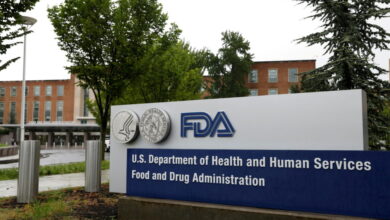Which is best, vaccine-induced immunity, “natural immunity,” or “super immunity” to COVID-19?

Over the last few weeks, I’ve noticed the resurgence of messaging that emphasizes “natural immunity” as being superior to vaccine-induced immunity to COVID-19, particularly for the more recent variants of SARS-CoV-2, such as Delta, Omicron, and, most recently, the Omicron subvariant BA.2. For example, Jeffrey Tucker published an article at the Brownstone Institute website asking “Are They Finally Admitting Natural Immunity?”, as though public health officials have somehow been “covering up” this “natural immunity”, the better to keep enforcing “lockdowns” and masking and vaccine mandates. (Translation: “Natural immunity” is the way out of the pandemic that “they” don’t want you to know about.)
Meanwhile, conservative-leaning mainstream media outlets like Fox News and The Wall Street Journal have had a number of stories and articles touting “natural immunity”, with, as just one of many examples, Johns Hopkins surgical oncologist Dr. Marty Makary having tried to portray a “high cost of disparaging natural immunity to COVID-19” and claiming that public health officials have “ruined many lives by insisting that workers with natural immunity to Covid-19 be fired if they weren’t fully vaccinated”. This narrative has, in particular, been deployed to defend the Canadian trucker convoys that recently besieged Ottawa and, just across the river from me in Windsor, blocked the Ambassador Bridge to Detroit in order to protest Canadian vaccine mandates.
Before I get to science, in the interests of transparency I like to make my position clear. The term “natural immunity” is a very poor descriptor whose very use of the word “natural” has made it very easy for ideologues and anti-vaxxers to weaponize to argue against COVID-19 vaccines and restrictions. I’ve discussed before, as has Alan Levinovitz, how scientists made a huge mistake in adopting the term “natural immunity”. The reason is that it is an inherently misleading term; people often view naturalness as synonymous with purity and goodness. Moreover, vaccine-induced immunity is every bit as “natural” as post-infection immunity (the more appropriate term to describe immunity after an infection), with the added huge advantage of not having to suffer through the disease and risk its potential complications, up to and including death, to acquire immunity.
Worse, advocates of “natural immunity” not limited to anti-vaxxers frequently describe this immunity as having quasi-magical properties, implying that it is lifelong, far better against everything, and even beneficial, with some even going so far to argue that it’s better, for instance, to let children become infected. (Of course, even though children do have a much lower risk of severe disease and death from COVID-19, there are those pesky large—for children—COVID-19 death tolls that rebuke this argument every bit as much as the death toll in the US that is now approaching one million rebukes previous predictions that we would achieve herd immunity soon.)
Sadly, it’s not just anti-vaxxers and anti-maskers who have started promoting the “natural immunity” narrative in which letting COVID-19 rip through the “healthy” population and children will get us to “natural herd immunity” faster than just vaccination campaigns. It’s doctors who should know better. As a result, increasingly activists, pundits, and politicians—sadly, including some doctors and scientists—opposed to the vaccine and COVID-19 mandates of any kind are co-opting the term “natural immunity” to give anyone previously infected and recovered a free pass from any restrictions, sometimes taking the idea to ridiculous extremes.
Leaving aside my contention that “natural immunity” is a horrible term (which is why I never use it except with scare quotes), what is the real situation? As is often the case with such issues, it’s complicated. We cannot discuss this question, however, without taking a look at the dominant narrative with respect to “natural immunity”, in particular, because the science is not consistent with this narrative.
The Great Barrington Declaration
I debated about whether to bring up the Great Barrington Declaration (GBD) yet again, having done so just last week in the context of John Ioannidis’ awful “study” that attempted to argue that the GBD was somehow overwhelmed in the social media narrative by “science Kardashians” with far more Twitter firepower than scientific contributions. It is an article that is being used by GBD advocates to cast opponents as unserious social media creatures. However, it is appropriate, given how the GBD, its authors, its signatories, and its boosters have dominated the media narrative on “natural immunity” and “natural herd immunity”.
The ideas behind the GBD, which was first published in October 2020 (before safe and effective COVID-19 vaccines were available to the public anywhere except in clinical trials) were threefold. First, “lockdowns” (however you define “lockdown”, and GBD proponents seem to define it as any government public health edict closing or restricting businesses or placing any restrictions whatsoever on private individuals) do far more harm than good. Second, “natural herd immunity” is inevitable, and, therefore third, we should adopt a “let ‘er rip” strategy with respect to COVID-19 and the “healthy” and “young” population and use “focused protection” to keep those at high risk of serious disease, complications, and death from COVID-19, safe. Moreover, contrary to their penchant for describing themselves as “silenced“, GBD authors and advocates have long had preferential access to media and government officials. Indeed, as Stanford Ph.D. student Mallory Harris has noted, the recent release of a book by Scott Atlas, President Trump’s COVID-19 advisor, basically confirmed this preferential access:
Problems abounded with the GBD with respect to all three ideas behind it. First, its adherents tended to vastly exaggerate the harms of “lockdowns” and minimize the ability of “lockdowns” and other mandates, such as masks (collectively known as nonpharmacological interventions, or NPIs), to slow the spread of COVID-19, an issue still debated today, while promoting a caricature of public health officials as completely ignoring any negative consequences of such policies in relation to potential benefits.
Second, the assumption that “natural herd immunity” was inevitable was just that, an assumption. “Natural herd immunity” is the epidemiological principle that over time an infectious disease will infect enough of the population to produce enough post-infection immunity to result in herd immunity, the level of immunity at which the number of new infections reaches a steady-state and there are no longer large spikes in incidence and epidemics. Because such immunity required that a huge fraction of the population suffer through the disease, GBD adherents had to bend over backward to portray COVID-19 as a “mild disease” by lowballing death estimates and portraying it as “harmless” to children.
More importantly, “natural herd immunity” also requires that post-infection immunity be long-lived, if not life-long. If immunity wanes too quickly in individuals or virus variants crop up that can evade the immunity from previous infections, “natural herd immunity” will likely never be reached. I can only cite Omicron and the new Omicron subvariant BA.2 as evidence that this has been the case with COVID-19, but even 16 months ago given how the Omicron variant has led to a massive surge in reinfections, despite all we didn’t know, we did know that post-infection immunity to coronaviruses is often transient and that variants that evade immunity commonly develop.
Even as long as a year ago, scientists were beginning to fear that herd immunity even as a result of post-infection immunity plus vaccine-induced immunity was probably out of reach because too high a percentage of the population would need to be immune, waning immunity (both vaccine- and infection-induced), insufficient prevention of forwarding transmission of the virus, and new virus variants, all the failed predictions of academics like Dr. Makary about how soon we will have “herd immunity” notwithstanding.
Finally, the concept of “focused protection” in the GBD was ill-defined to the point of being basically meaningless (and remains so today). It ignored the incredible difficulty—if not impossibility—of protecting the large segment of the population that is at high risk of severe disease and death, including the elderly and those with chronic health conditions, while a respiratory virus is ripping through the young, “healthy” population, while seemingly arguing just keeping the elderly and high-risk population locked away from society indefinitely to “protect” them while not unduly inconveniencing everyone else. It was a profoundly ableist and, dare I say, even eugenicist idea couched in terms of claiming that letting the young be infected would somehow also protect the vulnerable. It was always nonsense, a politically motivated faux proposal given that it originated in a conference organized by a right-wing think tank opposed to “lockdowns” and other COVID-19 restrictions.
The political use and misuse of “natural immunity,” particularly by GBD-linked sources like the Brownstone Institute notwithstanding, it is worth reviewing recent evidence to evaluate the relative value of post-infection immunity. It’s also worth doing so in the context of the narrative of GBD-linked sources, such as the Brownstone Institute, whose founder recently asked the question about “admitting” to “natural immunity”. Why? Because Tucker references a recent CDC study to make his claim:
In late January, the CDC published a report that made what might have been regarded as a shocking claim. If you have had Covid, the CDC demonstrated in a chart, you gain robust immunity that is better than that of vaccination, especially concerning duration.
That should be nothing surprising. Brownstone has chronicled 150 studies making that point. What made this new chart different was that it came from the CDC, which has buried the point so deeply for so long as to amount to a near denial.
So there: the CDC says it. So nonchalant! So uneventful!
If people had understood this two years ago, plus been made more completely aware of the dramatic risk gradient by age and health, lockdowns would have been completely untenable.
The society-wide mandates and lockdowns depended on keeping the public ignorant on settled points of cell biology and immunology, plus pressuring social media companies to censor anyone who didn’t fall in line. Here we are all this time later and the truth is coming out.
Had the knowledge of risk gradients and immunities been in the forefront of policy makers’ minds – instead of wild fear and obsequious deference to Fauci – we would have focused on protecting the vulnerable and otherwise allowed society to function normally so that the virus would become endemic. We would not only have saved thousands of lives; we could have avoided the vast economic, educational, cultural, and public-health wreckage all around us.
Those poor, “silenced” advocates for “natural herd immunity”! Note the way that Brownstone writer Paul Alexander—yes, that Paul Alexander, the HHS science advisor who once wrote in an email that we “want them [infants, kids, teens, young people, young adults, middle-aged with no conditions] infected” to reach “natural herd immunity”—conflates the number of studies with quality of data – a favorite tactic among anti-vaxxers as well. Note also how he blamed Anthony Fauci for it all, even though many months went by in 2020 when Trump barely spoke to Fauci because he didn’t like what Fauci had to say.
But what about that study? The narrative lately appears to be a tale of a couple of recent studies, which starts with the CDC study.
Did the CDC really say that “natural immunity” to COVID-19 is superior?
The study referenced by Tucker was published three weeks ago in Morbidity and Mortality Weekly Report (MMWR), the chief scientific outlet of the CDC, and he is quite taken by a video “analysis” written by Dr. Vinay Prasad. Before the pandemic, Dr. Prasad was known for critiquing the sometimes poor quality of clinical evidence used in oncology and other medical specialties, although even before the pandemic he had little but contempt for those of us who take the time to refute quackery and antivaccine misinformation. It’s ironic, then, how since the pandemic he’s pivoted to becoming a rich (and, to the public, an unfortunately seemingly authoritative) source of such misinformation, even describing public health interventions as potentially the first step on the road to fascism.
This figure represents data from California and New York (which account for 18% of the U.S. population) in order to assess what happened as the Delta wave became predominant, with the CDC stating in the discussion:
Across the entire study period, persons with vaccine- and infection-derived immunity had much lower rates of hospitalization compared with those in unvaccinated persons. These results suggest that vaccination protects against COVID-19 and related hospitalization and that surviving a previous infection protects against reinfection. Importantly, infection-derived protection was greater after the highly transmissible Delta variant became predominant, coinciding with the early decline of vaccine-induced immunity in many persons (5). Similar data accounting for booster doses and as new variants, including Omicron, circulate will need to be assessed.
So what we have is a snapshot of what happened as the Delta wave ramped up but before Omicron crashed onto the scene, which led to different results than what was observed with the original COVID-19 strain, for which vaccine-induced immunity was more potent than post-infection immunity. Is this slam-dunk evidence that “natural immunity” is superior? Not exactly.
As the CDC notes, these data don’t come close to taking into account the Omicron variant and the effect of the increasing number of people receiving boosters. Indeed, the CDC noted at least seven limitations, among them no stratification of the analysis by time since vaccine receipt; misclassification of persons with undiagnosed COVID-19 infection as having had COVID-19,
which would decrease apparent differences between the vaccinated and unvaccinated; unmeasured confounding due to differential risk; no information on the severity of initial infection; lack of ascertainment of receipt of additional or booster COVID-19 vaccine doses, given that the study was conducted before many persons were eligible or had received additional or booster vaccine doses; lack of precision in some samples due to sample size limitations; and the fact that the analysis was carried out before Omicron.



